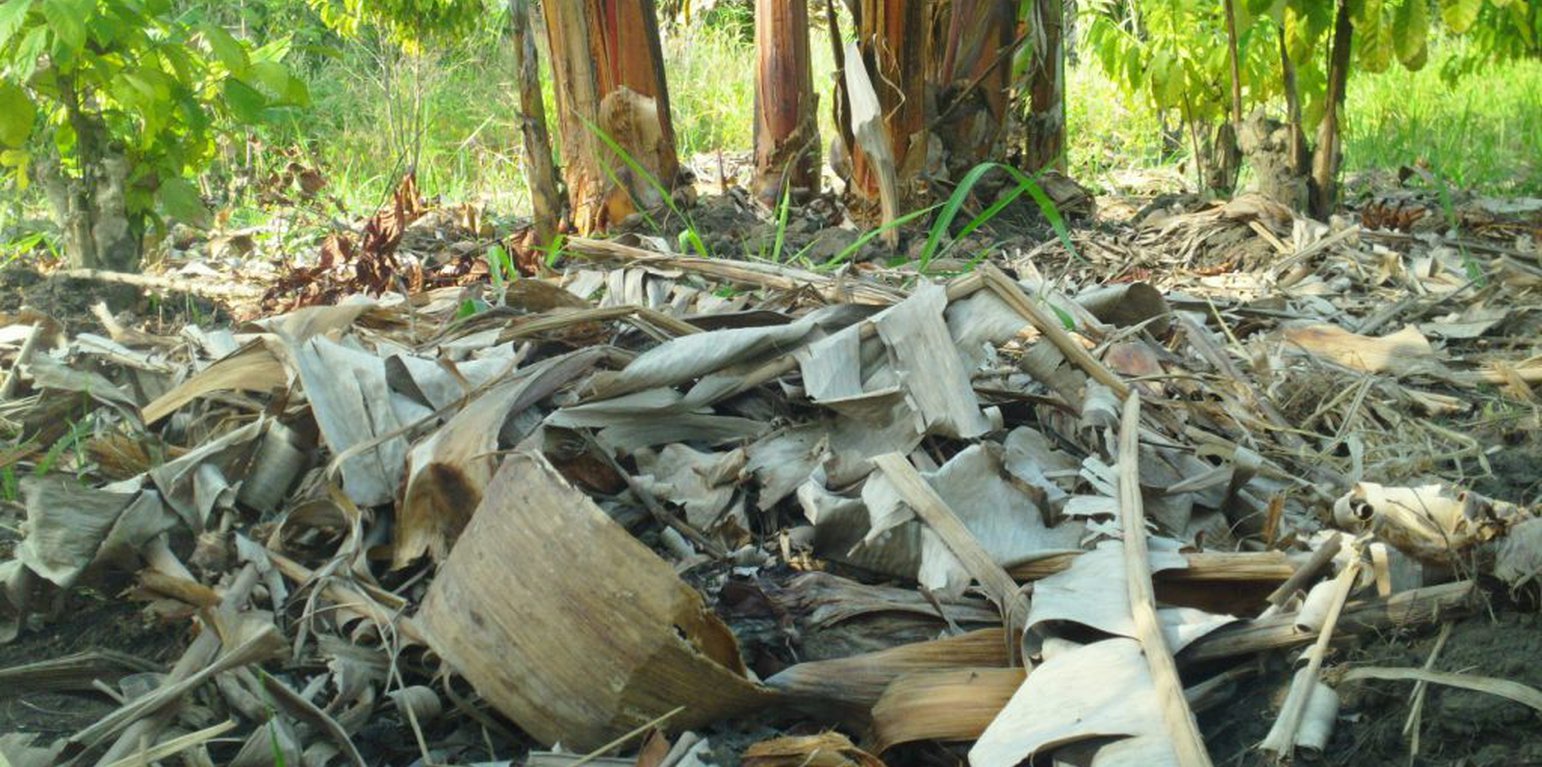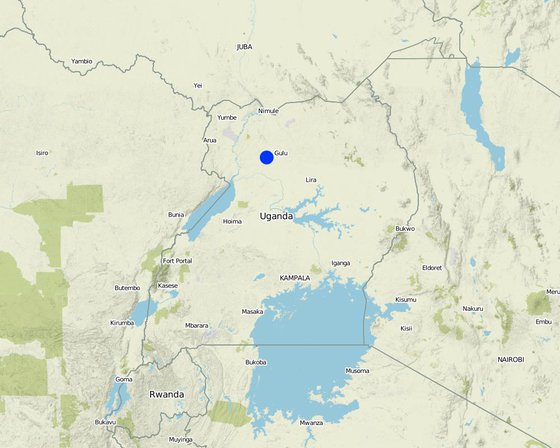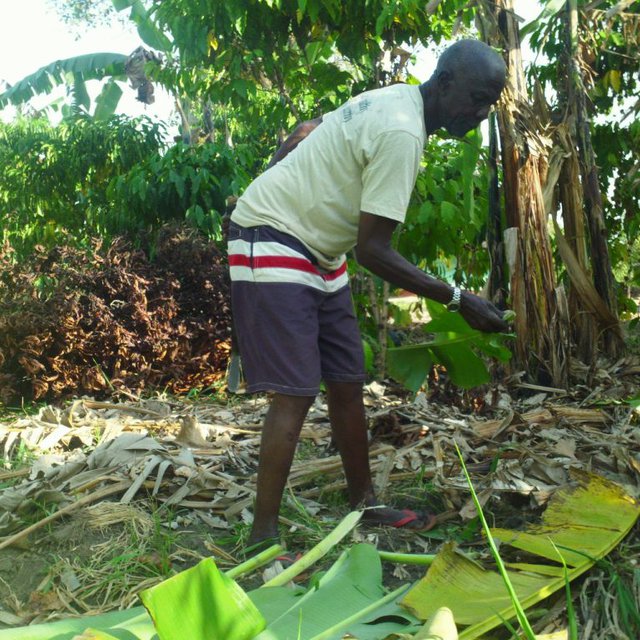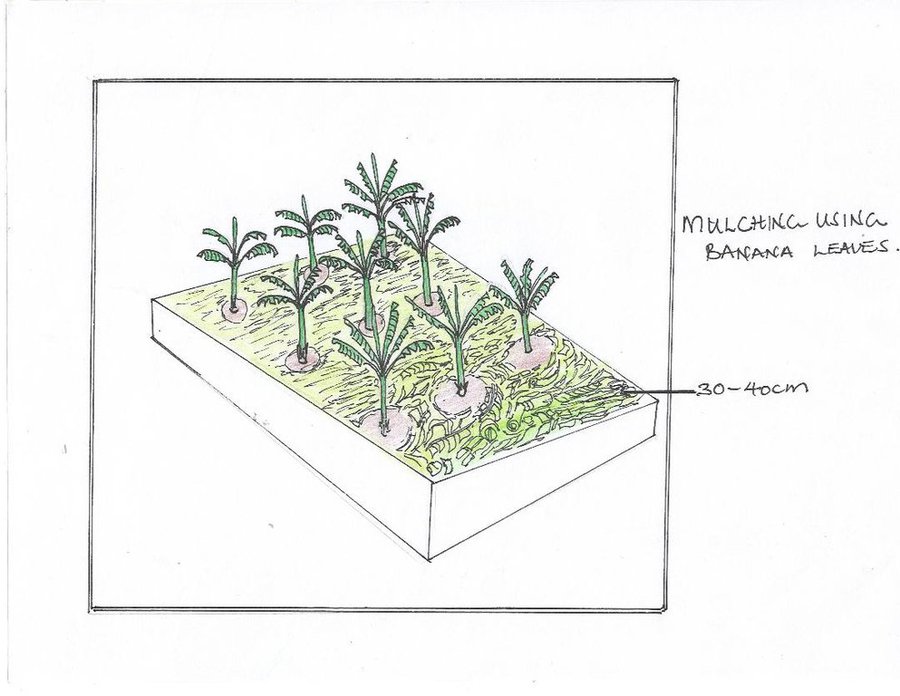



Locally obtained dry banana leaves is a low cost mulching material used by farmers in Northern Uganda to mulch soil in order to grow banana with the aim of improving soil fertility and soil moisture content retention.
The land user identifies a banana plantation usually 0.5 to 2 acres planted with sweet banana, Bogoya, Fear 17 varieties and spread the banana leaves across the banana plantation usually below 40-60 cm to the mother plant using 2-4 people per day, hoes and pangas.
Mulching is preferred because it uses locally available banana leaves within the plantation. It does not require high maintenance costs to pay for labor, digging and transport. Costs would be incurred transporting the mulching material. In addition to conserving moisture in the soils, it reduces water runoff to avoid erosion and improves the soil as the mulch material rots.
However, it is important for the land user to be aware that mulching using banana leaves serve as breeding place for banana weevils and if the land user places the mulch too close to the mother plant it will affect the growth of the young suckers. This therefore means land users who need to use this low cost mulching material need to first work out proper procedures with the extension worker on how to mulch banana plantation before mulching.
To sustain this technology, the land users can integrate cultivating multipurpose tree species (Calliandra and Grivellea) to additionally stabilize the soils and improve soil fertility when the tree mature and leaves litter.

Байршил: Nwoya District, Northern Region,Uganda, Уганда
Дүн шинжилгээнд хамрагдсан технологи нэвтрүүлсэн газрын тоо: нэг байршилд
Технологийн тархалт: газар дээр жигд тархсан (approx. < 0.1 км2 (10 га))
Тусгай хамгаалалттай газар нутагт?:
Хэрэгжилтийн огноо: 2012; <10 жилийн өмнө (саяхны)
Нутагшууллын төрөл










| Зардлын нэр, төрөл | Хэмжих нэгж | Тоо хэмжээ | Нэгжийн үнэ (UGX) | Зардал бүрийн нийт өртөг (UGX) | Нийт дүнгээс газар ашиглагчийн төлсөн % |
| Хөдөлмөр эрхлэлт | |||||
| Persons days employed on monthly basis | persons | 10.0 | 70000.0 | 700000.0 | 100.0 |
| Тоног төхөөрөмж | |||||
| Hoes | Pieces | 10.0 | 10000.0 | 100000.0 | 100.0 |
| Pangas | Pieces | 5.0 | 7000.0 | 35000.0 | 100.0 |
| Бусад | |||||
| Training costs (transport) | sessions | 3.0 | 30000.0 | 90000.0 | 100.0 |
| Технологи бий болгох нийт үнэ өртөг | 925'000.0 | ||||
| Зардлын нэр, төрөл | Хэмжих нэгж | Тоо хэмжээ | Нэгжийн үнэ (UGX) | Зардал бүрийн нийт өртөг (UGX) | Нийт дүнгээс газар ашиглагчийн төлсөн % |
| Хөдөлмөр эрхлэлт | |||||
| Persons days on monthly basis | Persons | 4.0 | 150000.0 | 600000.0 | 100.0 |
| Бордоо ба биоцид | |||||
| 100.0 | |||||
| Технологийн арчилгаа/урсгал үйл ажиллагаанд шаардагдах нийт үнэ өртөг | 600'000.0 | ||||
As result of integration and application of manure from littered leaves of banana.
The farmer uses mulch material from the same garden that is mulching.
Expenses only incurred on purchase of pangas which are not high. Labour costs are high.
From the sale of matooke.
Reduced labour and costs required on farm after mulching.
With Mulching , the farmer is able to realise more bananas produced which makes him food secure. Even the money obtained from sale of banana is used to buy food like posho and beans.
Especially with NUSAF which supported the farmer with trainings.
Trained by Northern Uganda Social Action Fund (NUSAF) and extension workers on mulching using bananas.
Retained by mulch material.
Due to mulch material.
Due to decomposed mulch.
Retained by the mulch material.